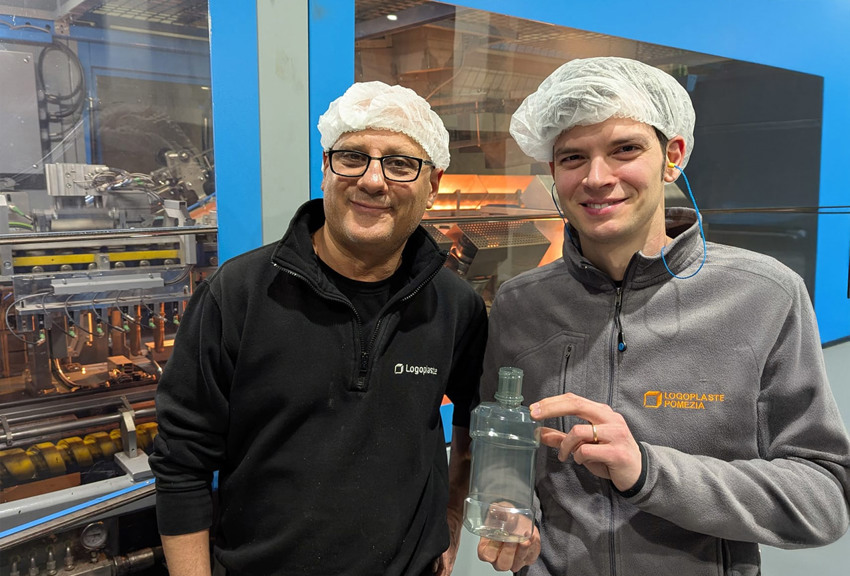As highlighted in our Scope 3 emissions data, selecting the right resins for packaging production and transitioning feedstocks away from fossil-based materials remain critical to reducing our corporate GHG emissions.
Logoplaste has been using recycled raw materials for over 10 years and in 2018 committed to further expand the incorporation of recycled content across product portfolio, by signing the “The Global Commitment”, led by the Ellen MacArthur Foundation.
We have continued to make strong progress in increasing the use of recycled materials across our packaging solutions. As shown below, the percentage of post-consumer recycled content in our raw material consumption has grown consistently year over year, with a particularly notable increase in 2024:

Recycled raw materials consumption
| % PCR | % PCR PET | % PCR HDPE | |
| 2019 | 6.9% | 10.4% | 1.1% |
| 2020 | 9.6% | 13.5% | 3.1% |
| 2021 | 14.0% | 18.8% | 6.2% |
| 2022 | 18.8% | 25.2% | 8.6% |
| 2023 | 21.5% | 28.2% | 10.6% |
| 2024 | 24.8% | 31.6% | 14.0% |
| 2024 vs 2023 | 15.1% | 11.9% | 32.5% |
PCR – post-consumer recycled
% PCR - total PCR materials transformed by total materials transformed
% PCR PET - PCR PET transformed by the sum of PCR PET transformed and virgin PET transformed
% PCR HDPE - PCR HDPE transformed by the sum of PCR HDPE transformed and virgin HDPE transformed.
Linked with the increase of recycled content, from 2023 to 2024, we observed a 1.1% drop in CO2e emissions resulting from our purchased raw materials, despite the slight 2% increase in tonnage of processed raw materials.
This is related to the better eco-profile of recycled resins, compared to fossil-based resins.
Increased use of post-consumer recycled (PCR) PET in packaging

Pomezia achieved a significant milestone in sustainable packaging by producing the first Listerine® bottles using 100% post-consumer recycled (PCR) PET. This achievement reflects a broader commitment to reducing reliance on virgin plastics and supporting the circular economy.
Transition details:
- Previous composition: bottles were previously made with 50% PCR PET
- New composition: upgraded to 100% PCR PET.
- Bottle sizes transitioned: initially implemented for 500 ml bottles, followed by 250 ml and 1000 ml formats. Remaining sizes are scheduled for transition in the coming weeks.
Technical and operational challenges:
- Material variability: the shift to a new resin supplier revealed batch-to-batch color variation, a common challenge with recycled materials
- Process impacts: this variability impacted blowing machine calibration, requiring frequent adjustments and longer stabilization times
Pomezia is finalizing the transition for all remaining bottle formats and is committed to expanding the use of PCR content across the supply chain, supporting Johnson & Johnson’s broader sustainability goals.